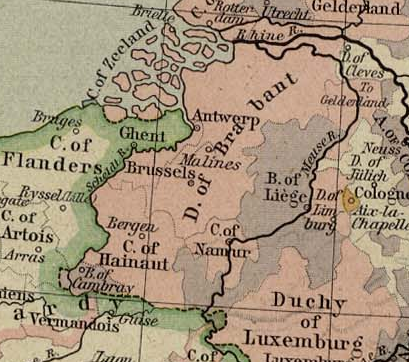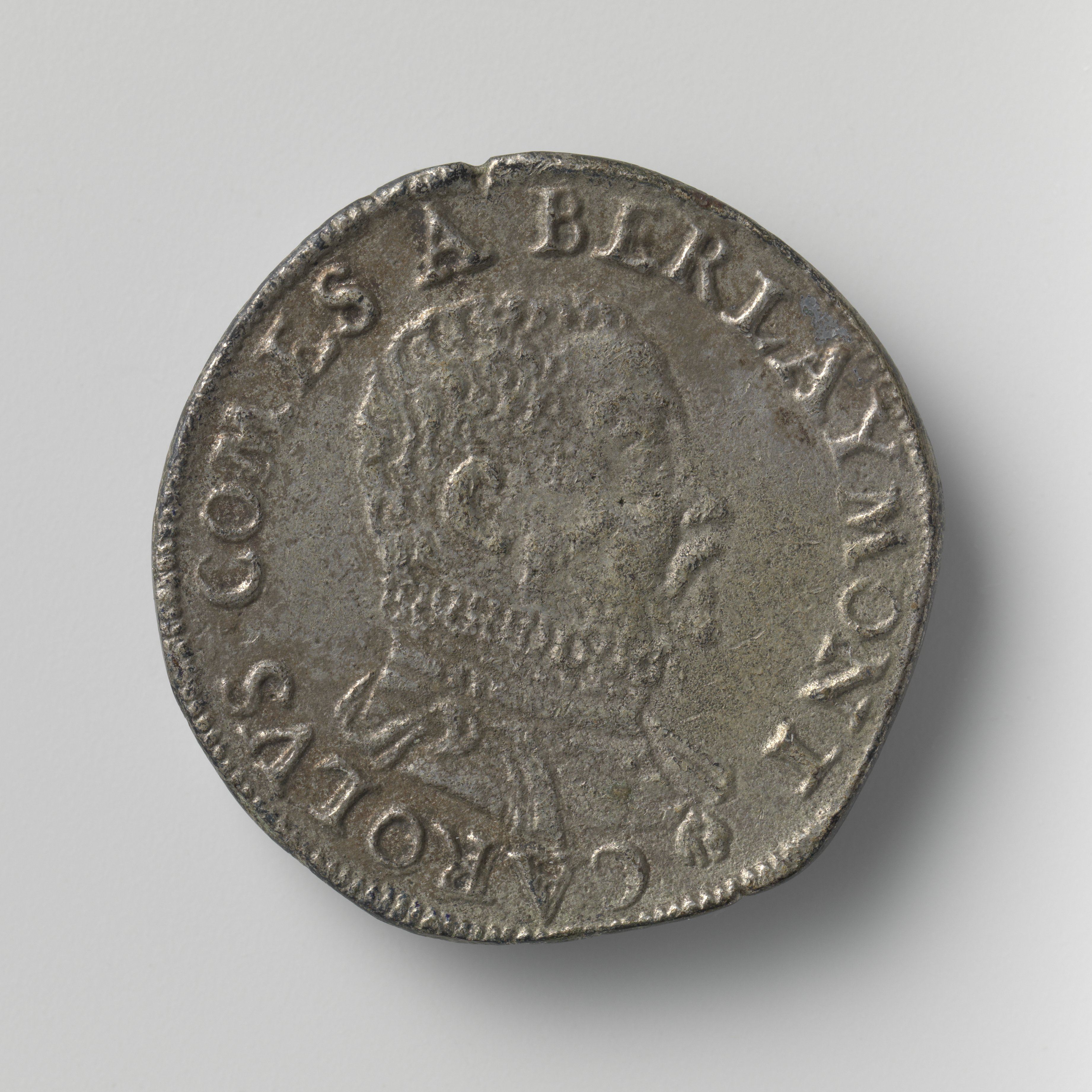|
Grand Huntsman Of Brabant
Grand Veneur de Brabant or Grand Huntsman of Brabant was a feudal function at the court of the Duchy of Brabant. History Like other functions at the court, this was an exclusive position for certain noble houses. In the 16th, 17th and 18th centuries the function was inherited by the Lords of Rubempré, and passed to the Merode family. Similar functions have been the Panetarius and Grand Falconer of Brabant, Grand Forester of Brabant and High Forester of Flanders.Recherches historiques de la maison de chasse des Ducs de Brabant et de l'ancienne cour de Bruxelles; précédées d'un aperçu sur l'ancien droit de chasse en Brabant/Kiessling, 1854 List References See also *Broodmeester of Flanders Broodmeester of Flanders or Pannetier de Flandre (Master of the Bread / panetarius) was a feudal title, this hereditary title evolved in the Ancien Régime to a ceremonial function. History The court had a few ceremonial functions, most known ... {{hunting-stub Nobili ... [...More Info...] [...Related Items...] OR: [Wikipedia] [Google] [Baidu] |
Duchy Of Brabant
The Duchy of Brabant was a State of the Holy Roman Empire established in 1183. It developed from the Landgraviate of Brabant and formed the heart of the historic Low Countries, part of the Burgundian Netherlands from 1430 and of the Habsburg Netherlands from 1482, until it was partitioned after the Dutch revolt. Present-day North Brabant (''Noord-Brabant'') was ceded to the Generality Lands of the Dutch Republic according to the 1648 Peace of Westphalia, while the reduced duchy remained part of the Habsburg Netherlands until it was conquered by French Revolutionary forces in 1794, which was recognized by treaty in 1797. Today all the duchy's former territories, apart from exclaves, are in Belgium except for the Dutch province of North Brabant. Geography The Duchy of Brabant (adjective: '' Brabantian'' or '' Brabantine'') was historically divided into four parts, each with its own capital. The four capitals were Leuven, Brussels, Antwerp and 's-Hertogenbosch. Before ' ... [...More Info...] [...Related Items...] OR: [Wikipedia] [Google] [Baidu] |
Charles De Berlaymont
Charles de Berlaymont (1510 in Berlaimont? – 1578 in Namur?) was a leading nobleman in the Low Countries in the 16th century. He was an important counselor of Margaret of Parma, Grand Huntsman of Brabant and generally sided with Spanish politics in the early years of the Eighty Years War. Biography He was the son of Michèl de Berlaymont and Maria de Berault. He was lord of Floyon and Haultpenne, and baron of Hierges. In 1553, he became stadtholder of Namur. Berlaymont was knight of the Order of the Golden Fleece, senior hunting master of Brabant, Flanders and Namur, member of the Council of State, hereditary chamberlain of finances and bailiff of the county of Namur. In 1567, he became a member of the much-dreaded Council of Troubles. In 1574, his home territory Berlaimont was elevated to the status of a county. In 1577, Berlaymont was one of the signees of the Union of Brussels, which he immediately repudiated. He is known for his famous comment on the Compromise of Nob ... [...More Info...] [...Related Items...] OR: [Wikipedia] [Google] [Baidu] |
Broodmeester Of Flanders
Broodmeester of Flanders or Pannetier de Flandre (Master of the Bread / panetarius) was a feudal title, this hereditary title evolved in the Ancien Régime to a ceremonial function. History The court had a few ceremonial functions, most known was the chamberlain, Bouteiller (buticularius), Standard-bearer, Woudmeester (Forestarius) and the Seneschal.,Recherche des antiquitez et nobelesse de Flandre Door Philippe de L'Espinoy less known was the Panetarius. This ceremonial function was reserved for an important family and was given from father to son by the Count of Flanders. In 1234 the Broodmeester was requested to attend the table of the Countess of Flanders. This function was paid and he received some privileges. One of the titles that inherited this function was the Lord of Rode, later the Marquess of Rode. A similar function existed at the court of the Duke of Burgundy and the King of France. List of Broodmeesters See * Grand Panetier of France * Grand Huntsman of ... [...More Info...] [...Related Items...] OR: [Wikipedia] [Google] [Baidu] |
Maximilian, Prince Of Hornes
Maximilian Emanuel, 3rd Prince of Hornes, Count of Baucignies and of Solre-le-Château (31 August 1695, Brussels – 12 January 1763, Brussels), was a nobleman and Grand Huntsman of Brabant. His father was Philippe Emanuel, 2nd Prince of Hornes, and his mother was Princess Marie Anne Antoinette of Ligne. He was made a Knight of the Austrian Golden Fleece in 1749. The Principality of Hornes was surrounded by the Bishopric of Liège. Career at court * Grandee of Spain, 1st Class. * Grand Huntsman of Brabant (1750–1763). * Grand Esquier of the Empress. * Grand Master of the Imperial Household (1745–1763). Marriages and issue He first married Lady Marie Thérèse Charlotte Bruce (1697–1736), daughter of Thomas Bruce, 2nd Earl of Ailesbury, an English nobleman who lived in exile in Brussels for much of his life, and his second wife Charlotte d'Argenteau, comtesse d'Esneux. Their children were: 1) Marie-Thérèse-Josepha de Hornes (19 October 1725 – 19 June 1783):''ma ... [...More Info...] [...Related Items...] OR: [Wikipedia] [Google] [Baidu] |
Philippe, Lord Of Rubempré
Philippe, Lord of Rubempré was a Flemish Noble lord who was the son of Antoine III, Lord of Rubempré and Marie d'Averhoult. He was created for merit the 1st Count of Vertaing in 1614 and 1st Baron of Everbergh in 1620 by the Archdukes. He was in Service of the King of Spain as governor and captain general of Lille and Douai. In 1624 he was admitted to the Order of the Golden Fleece. Between 1599-1621 he succeeded his father in the office of hereditary Grand Huntsman of Brabant Grand Veneur de Brabant or Grand Huntsman of Brabant was a feudal function at the court of the Duchy of Brabant. History Like other functions at the court, this was an exclusive position for certain noble houses. In the 16th, 17th and 18th centur .... He married firstly Anne of Croy-Rœulx, daughter of Eustache of Croy-Rœulx. He married secondly Jacqueline de Recourt-Lens, with a son: Charles-Philippe, Lord of Rubempré, who was the father of Philippe, 1st Prince of Rubempré.Nobiliare des Pays-bas ... [...More Info...] [...Related Items...] OR: [Wikipedia] [Google] [Baidu] |
Antoine III, Lord Of Rubempré
Antoine is a French given name (from the Latin ''Antonius'' meaning 'highly praise-worthy') that is a variant of Danton, Titouan, D'Anton and Antonin. The name is used in France, Switzerland, Belgium, Canada, West Greenland, Haiti, French Guiana, Madagascar, Benin, Niger, Burkina Faso, Ivory Coast, Guinea, Senegal, Mauritania, Western Sahara, Morocco, Algeria, Tunisia, Chad, Central African Republic, Cameroon, Equatorial Guinea, Gabon, Republic of the Congo, Democratic Republic of the Congo, Burundi, and Rwanda. It is a cognate of the masculine given name Anthony. Similar names include Antaine, Anthoine, Antoan, Antoin, Antton, Antuan, Antwain, Antwan, Antwaun, Antwoine, Antwone, Antwon and Antwuan. Feminine forms include Antonia, Antoinette, and (more rarely) Antionette. As a first name *Antoine Alexandre Barbier (1765–1825), a French librarian and bibliographer *Antoine Arbogast (1759–1803), a French mathematician *Antoine Arnauld (1612–1694), a French theol ... [...More Info...] [...Related Items...] OR: [Wikipedia] [Google] [Baidu] |
John IV Of Glymes
John IV of Glymes, 2nd Marquess of Berghes (1528–1567), Grand Huntsman of Brabant, was a noble from the Low Countries. He was the son of Anthony of Glymes (1500–1541) and Jacqueline de Croÿ, sister of Philippe II de Croÿ. He succeeded his father as Lord of Bergen op Zoom in 1541 under regency of his mother. As his ancestors, John IV was an important political figure of his time. In 1550, he married Maria of Lannoy, daughter of Jan van Lannoy, a Knight in the Order of the Golden Fleece. They had no surviving children. In 1554 he was sent to England, together with Lamoral, Count of Egmont, to arrange the marriage between Philip II of Spain and Mary I of England. He participated in the War against France and was rewarded with the Order of the Golden Fleece in 1556. Four years later, he was appointed Stadtholder of Hainault. He was also a member of the Council of state. When the tensions between King Philip II, represented by his minister Antoine Perrenot de Granvelle, and ... [...More Info...] [...Related Items...] OR: [Wikipedia] [Google] [Baidu] |
Lords Of Rubempré
The Lords of Rubempré were feudal lords, and the ancestors of the current Princes of Rubempré, belonging to the Belgian Nobility. Rubempré is currently in Somme; Picardia; France. Baldwin is the First Lord of Rubempré mentioned in 1202. In the 16th century the family was allied to the house of Bourbon-Rubempré.Histoire Généalogique Et Chronologique de la Maison Royale de Bourbon, Volume 1 Lords of Rubempré Princes of Mérode - Rubempré The title was incorporated by heritage to the House of Mérode, who stil uses this title upon the current generation. The 2nd Prince inherited the feudal function of Grand Huntsman of Brabant Grand Veneur de Brabant or Grand Huntsman of Brabant was a feudal function at the court of the Duchy of Brabant. History Like other functions at the court, this was an exclusive position for certain noble houses. In the 16th, 17th and 18th centur .... References Ru {{Belgium-noble-stub ... [...More Info...] [...Related Items...] OR: [Wikipedia] [Google] [Baidu] |
Lannoy Family
The House of Lannoy is the name of an old and important Belgian noble family that takes its name from the French town of Lannoy, Nord. The name comes from ''l'Annoy'' (or ''l'Annoit'', from Latin ''alnetum'') which means «the alderwood» in Picard French of Flanders. History The oldest known ancestor is one Gillion de l'Annoit who lived in the 13th century. Many of his descendants were members of the Order of the Golden Fleece. They played a prominent role in Flanders during the Middle Ages. Different family branches and lines existed amongst the Lords of Beaurepaire, Clervaux, Princes of Sulmona and Princes of Rheina-Wolbeck. One branch of the family supposedly became the influential American Delano family through its progenitor Philip Delano. However, the possible connection between the two has never been proven. A branch of the family supposedly engaged in the transaltlantic slave trade, resulting in an existing lineage of the family in South America and the Caribbean. ... [...More Info...] [...Related Items...] OR: [Wikipedia] [Google] [Baidu] |



